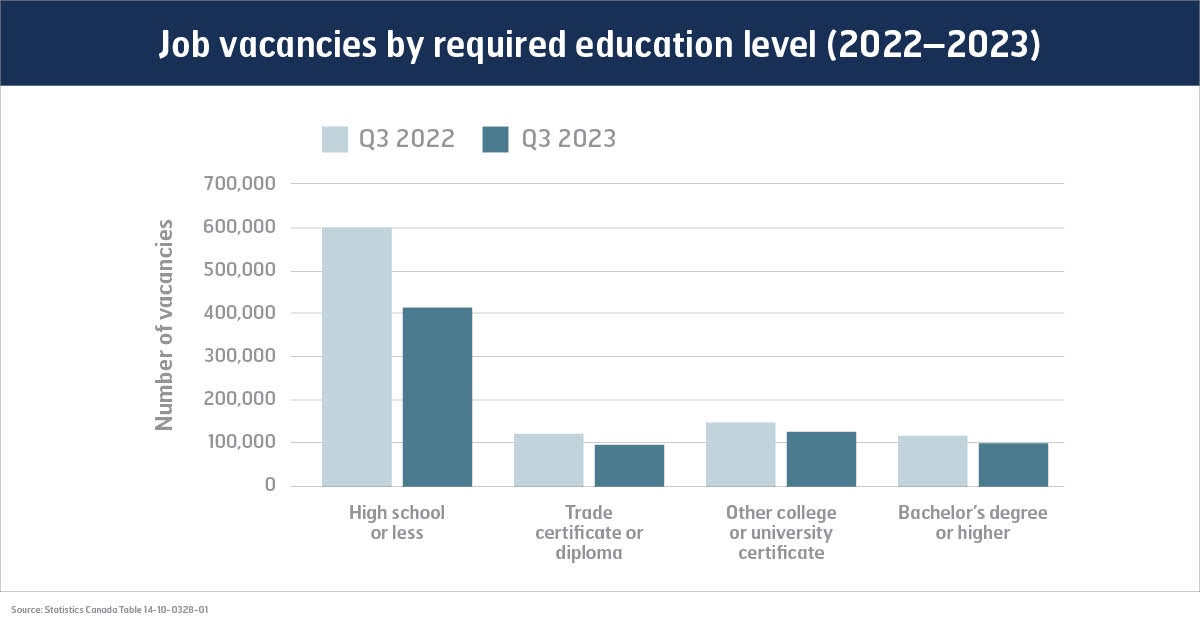Employment rose slightly in January, after remaining mostly stable during the final three months of 2023. Although this increase is encouraging, new jobs have not kept pace with the growth in the number of workers aged 15 and up. Over the past year, while 345,000 new jobs were added, the working-age population expanded by 1 million.
Despite the surge in the working-age population, there has only been moderate growth in unemployment. This is because the majority of those who didn’t find a job over the past year are no longer counted as part of the labour force.
For Statistics Canada to consider someone part of the labour force, they either have to have a job or be looking for one. When there aren’t many opportunities in the labour market, people will often stop looking for work and engage in other activities like taking care of family or going back to school.
This dynamic is evident in the latest data. Although our working-age population grew by 1 million over the past year, only half that number were added to the labour market. This means 500,000 more working-age adults are not being counted as part of the labour force this January as compared to last January. Students made up one third of this number. Retirees accounted for another 25%, with the rest being caregivers, volunteers and those unable to work due to illness or disability.

As unemployment has increased, the number of job vacancies has fallen. The most recent data for job vacancies is from the third quarter of 2023. At that time, there were 1.7 unemployed individuals for every job vacancy, with the most significant decrease in available jobs seen in positions requiring a high school diploma or less.
The rise in unemployment was more evenly distributed across education levels. Those with a high school diploma or less, those with some post-secondary education and those with a university degree all experienced similar increases in unemployment.


